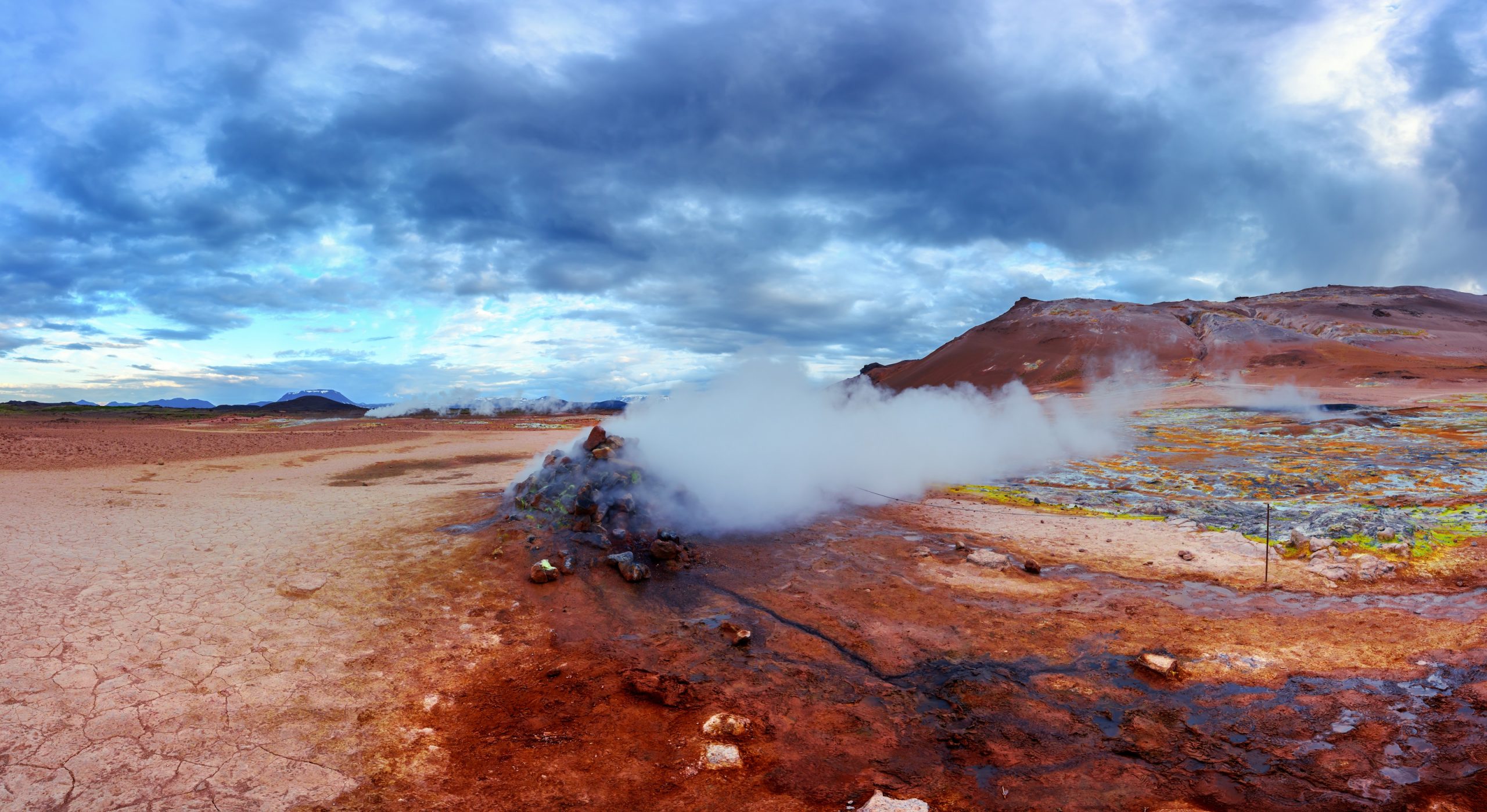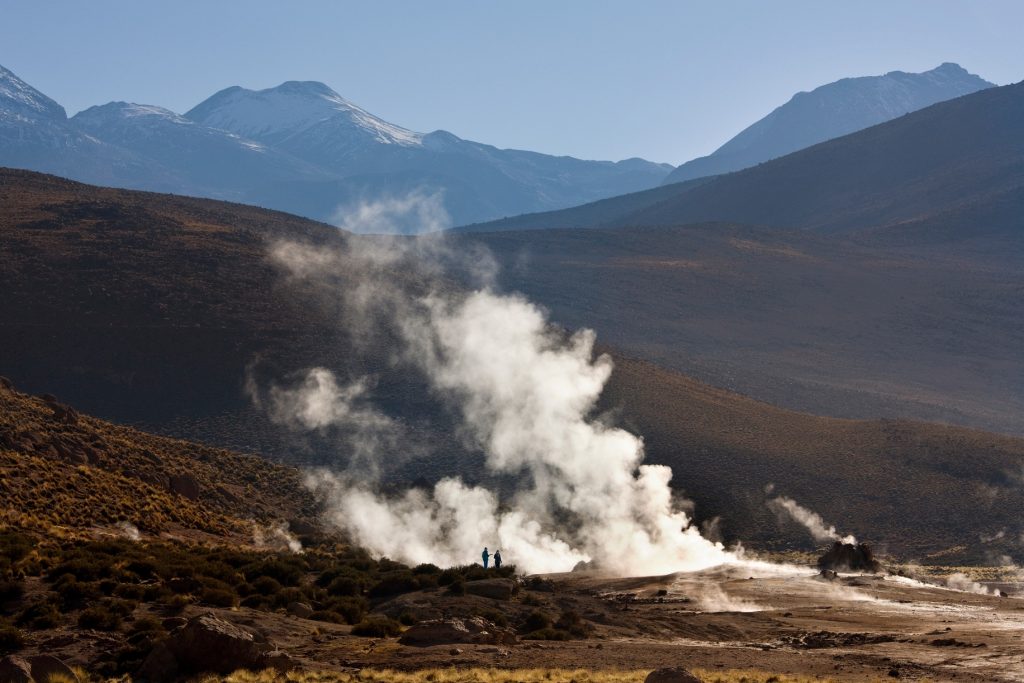
In the last decade or so, the conversation about energy production has increasingly begun featuring renewables. This is a result of recent revelations that have painted a grim picture of our collective future. If we keep on burning fossil fuels at the rate we are now.
However, whenever we talk about renewable energy production or sources. Most people automatically gravitate towards wind and power. This is a recent push, as more and more countries are investing in these fields.
Hydroelectricity has been a far more reliable source of renewable energy in the past. At least at the utility-scale. But it is solar and wind that has captured the imaginations of renewable enthusiasts.
One form of renewable energy production that doesn’t get much love is geothermal. Even though it has the most potential as a renewable source of energy and heating. Know the scope of Geothermal Energy in India.
Geothermal energy is initially created by harnessing the escaping heat from the core. This is often done via heat exchange systems. That relies on pumping pressurized liquid into natural fissures to trap the heat.
These kinds of systems have their own advantages and disadvantages. When it comes to energy production and heating/cooling requirements. As compared to conventional fossil fuel-based energy production methods.
Today we will take a look at these advantages and disadvantages. To see how promising is the future of geothermal energy.
There are a lot of advantages of geothermal energy. Not only is it cheap and abundant. But the energy production process itself has few hassles that you have to deal with. Let us take a closer look at these advantages and why they make geothermal energy a good proposition.
One of the most obvious advantages of geothermal energy is that it is renewable. The Earth’s core is a constant source of heat energy. That gradually releases that heat up to the surface through natural fissures.
Even if we were to harness all of the available energy completely. It would still be automatically regenerated by the Earth, literally overnight. This is a natural process that will continue until the planet continues to exist.
This makes geothermal energy one of the best sources of renewable energy. As the machinery put in place today would still be as productive 50 years down the road, as it is today.
Thanks to the nearly inexhaustible supply of heat from the Earth’s core. Any geothermal energy we leave untapped is simply wasted potential.
To give you an idea of the scope of energy we are talking about. The International Renewable Energy Agency (IRENA) estimates that. The amount of heat within 10,000 meters of the earth’s surface. Is estimated to contain 50 000 times more energy than all oil and gas resources worldwide.
Moreover, it can be easily harnessed at almost any place. For example, along plate boundaries, such as the majority of the Pacific “Ring of Fire”. Spread across the borders of the American and Asian continents.
There are other mid-oceanic ridges, such as those near Iceland and the Azores. As well as certain rift valleys, like the one in East Africa, or near hot spots like Hawaii.
In addition to being renewable and abundantly available. One of the best things about geothermal energy is the fact that it is reliable. Unlike solar and wind, which have natural peaks and troughs in the production cycle. Geothermal energy is constant and self-sustaining.
This remains constant throughout the year. Irrespective of the ambient temperatures on the surface. Which makes this form of energy production so reliable.
Moreover, since most of the machinery is often kept underground, it doesn’t suffer a lot of wear and tear. Related to exposure to the harsh weather elements outside.
So production doesn’t need to shut down irrespective of the weather conditions outside. Something that is still a major issue with other sources of renewable energy.
Another aspect where geothermal energy beats conventional energy production is environmental friendliness. Unlike fossil-fuel or nuclear-fuel-based systems, geothermal energy plants have very few emissions.
Even the carbon footprint of the entire production process is quite low. As all you really need is liquid and/or coolant that is generally pumped into the earth to extract the heat. And the heat exchange process doesn’t create any waste either.
Sure, few greenhouse gases are still released during the drilling process. But the amounts are almost inconsequential when we compare them to fossil fuels. Or even the toxic waste produced by nuclear plants.
In addition to conventional energy production using heat exchange or a steam turbine. Geothermal energy is also great for heating and cooling purposes.
So much so, that geothermal heat pumps use 25-50% less electricity than other systems. With their flexible design, they can be easily adjusted to different situations. With the ability to heat up liquids up to 150 degrees, as well as act as a heat sink.
Since sources of geothermal energy are rarely affected by ambient surface temperatures. They also require a lot less space for hardware as opposed to conventional systems.
As the heating and cooling systems are pretty straightforward. And have been successfully used for heating purposes. Since long before geothermal energy production became a reality.
Geothermal Energy utilization in Indian context
The reason why these machines can be so simple and compact is that geothermal energy is self-sustaining. The Earth produces the heat itself, so we don’t need any fuel to sustain the process.
This results in geothermal energy being one of the cheapest sources of energy. With savings of up to 80% over conventional energy production. Once the upfront installation costs are gradually recovered, this number goes up further.
Government-sponsored geothermal plants can even bypass that initial debt by writing it off. And supplying near-free energy to the people. For up to 50 years, which is the average lifespan of underground geothermal plants. This is one of the best advantages of geothermal energy.

No matter how many advantages renewable energy may have, nothing is perfect. This is true for geothermal energy as well. There are certain disadvantages associated with this form of energy production as well. It is important to understand these disadvantages. If we are to get a complete picture of the technology, and its potential.
One of the biggest issues with geothermal energy is the need for an ideal location. While most other forms of energy production can be easily established anywhere. Geothermal energy requires that the machinery is exactly on top of the energy source.
This becomes an issue if the source of geothermal energy is located in a remote area. So, you will need to establish all the infrastructure from scratch in that specific place.
Fossil fuel or nuclear fuel plants don’t have these limitations. Since the raw material can be easily imported from all over the world. In fact, most countries rely on external imports to sustain their energy production.
Another unfortunate side effect of geothermal energy is environmental pollution. This happens because the Earth releases greenhouse gases when we drill into it. These include hydrogen sulfide, carbon dioxide, methane, and ammonia.
This can be harmful to the environment. Even though the quantities released are pretty insignificant compared to fossil fuel burning. We still have to take it into account, as even low emissions can still add up over time.
Another potentially dangerous side effect of geothermal energy production is earthquakes. These are often minor tremors that occur when we drill into the Earth. And push pressurized liquid into the natural fissures.
Over time, this can do a lot of damage to nearby structures. Thankfully, most geothermal energy spots are already located away from major population centers. So, it isn’t as big a concern, as to make geothermal energy an immoral practice. Still, it is something we need to keep an eye out for.
One of the main issues preventing widespread adoption of geothermal energy. Are the high upfront costs related to the creation of energy infrastructure.
These costs involve exploring potential geothermal hotspots for feasibility. Drilling into promising fissures to make them more usable. As well as placing the necessary machinery required to harness geothermal energy.
Sure, these costs can be easily recovered over time. But it still poses a very real hurdle for poorer countries that don’t have the money to spend on such ventures. Thus counting as a disadvantage of geothermal energy.
These were just some of the advantages and disadvantages associated with geothermal energy. You can compare them to get a better picture of the potential of this form of renewable energy.
India Bets on Geothermal Energy, Green Hydrogen for a Carbon Neutral Ladakh
Leave a Reply